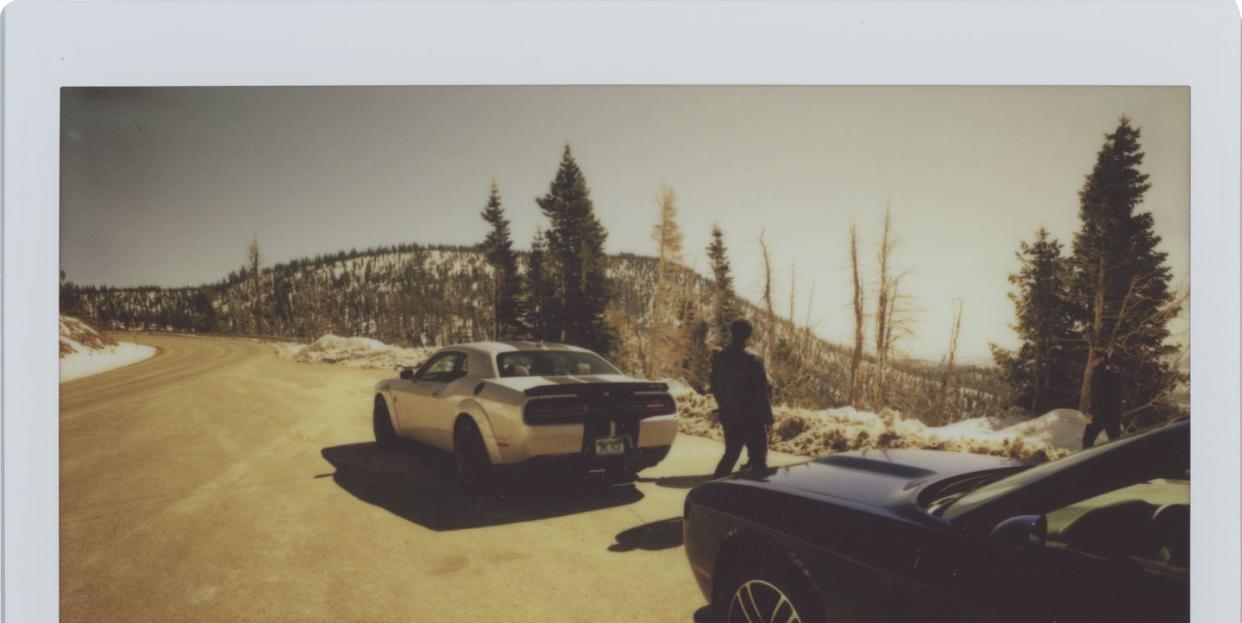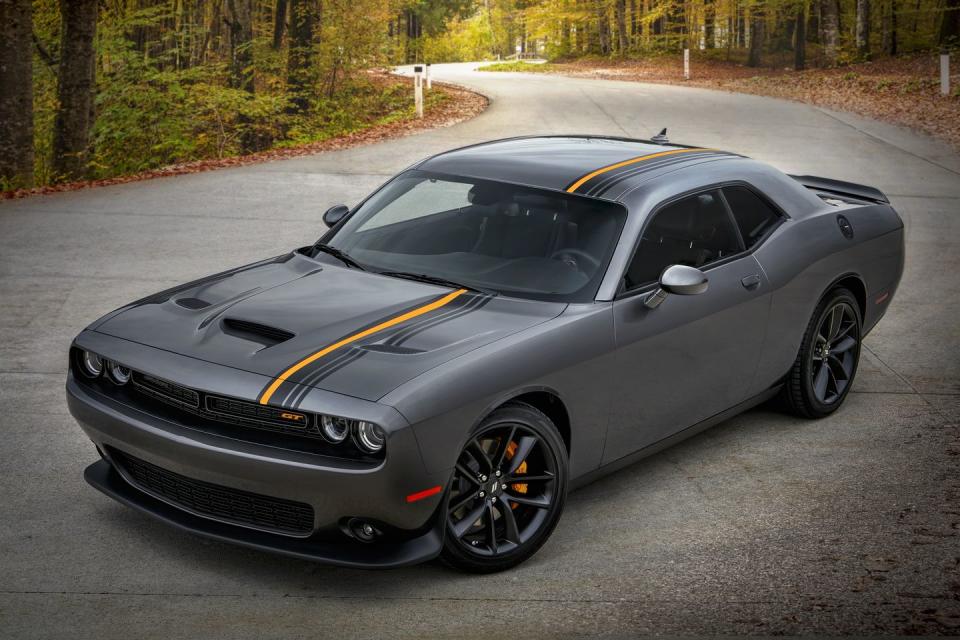I Am Not a Challenger Person

In 2021, Dodge sold 54,315 Challengers. In the grand scheme of things, this is not a massive number, just a bit more than the number of pickups Ram sells every month. In terms of American pony cars, though, the Challenger is king, outselling both the Ford Mustang and the Chevrolet Camaro. How this happened, I'm not quite sure.
The Challenger namesake returned in 2008, followed by a nearly imperceptible facelift in 2015. With quad headlights and the distinct rear light bar, it has presence, and maintains its retro appeal. There's also an insane spread between the entry-level car in terms of price and power, with nearly $60,000 and 500 hp separating the base SXT from the 807 hp SRT Super Stock. It's the Porsche 911 way of doing business.
Great, it's a rear-drive muscle car in the grand American tradition, a machine with an incredible engine lope that supplies burnouts on demand. The Challenger has undeniable attitude. It'll post its own for-sale ad on Craigslist if you even utter the word 'sustainability' while driving around in it.
Those characteristics have made the Challenger a popular car. I just don't get it. The thing is massive. I recently drove a Challenger 392 Scat Pack with the Hemi Orange option and immediately felt like I was driving a truck. Granted, I got in the Challenger after hopping out of the new Nissan Z, a smaller, tighter, lower car no matter how you look at it. But the Challenger still felt like I was driving from a raised barber's chair, a bulky body levitating around me.

Most cars tend to shrink as you get used to them, but the Challenger just won't. It's like a body-on-frame SUV. It feels massive from the first second you're in it, and it never gets any smaller.
I don't have an issue with the engine. The 6.4-liter Hemi is one of the greats, with that perfect American V-8 rumble. You can even pair that engine to a six-speed manual, a wonderful option we should all celebrate. Except this test car has a ZF eight-speed automatic, a wonderful gearbox in every application. Here, it's still great, with crisp shifts when you're hammering on it. The issue is when you're going slow. It seems to be programmed to eke out every MPG possible, so the transmission slides lazily into gears far earlier than you'd elect to shift. That results in the Challenger's transmission feeling confused, snagging what feel like dozens of downshifts around town. It bothers me far more than it should.
Then there's the perception of the vehicle itself. These are the only cars where owners seem to leave a bit of packing material on them–yellow splitter guards cough cough ahem–to look cool. You tend to see Challengers tailgating you on the highway or flying up the right lane dicing through grandmas in traffic. In every quiet American neighborhood, Challenger owners will reliably accelerate like aggressive dipsticks just so you, minding your business on the sidewalk, will hear the V-8. If it's a Hellcat, expect the same ruckus with supercharger whine dolloped on top.

I'm all for enjoying your car, and many of the issues of perception for these cars are exactly the same for the Camaro or Mustang. People view them as loud and antisocial, because they are. For whatever reason though, the Challenger seems to be the most antisocial. Probably because Dodge sells so many. The Challenger is an aging boat with a gigantic V-8 attached, apparently it has an issue putting power down without generating enough noise to wake the dead.
Maybe it's just me. My favorite cars are small. They emphasize handling over horsepower. That's why I own a Miata. This is one of those times that stereotypes play in to the car world, because a person who drives a Challenger won't understand how someone could drive a tiny Miata with no power. Conversely, the Miata driver doesn't see the allure of the gigantic Challenger. There's also a whiff of the old about the Challenger. It feels dated and not in a charming way. It's a reminder of the days when Dodge was under Mercedes's umbrella. Switchgear is still from Mercedes cars of the late 2000s, the platform has roots there too. There's only so much you can update something before it needs to be replaced.
Sure, Dodge will have a new straight-six to slide in soon, but that will be just another patchwork fix for a car with ancient bones that aren't getting any younger. Variants like the Super Stock and Hellcat are a blast in a straight line, and a T/A is probably fun on a very open track like Willow, but on the road, the other versions of the Challenger are showing their age. If Dodge decides to make one with a new platform and slot the 6.4 V-8 in, though, it'll be a hell of a thing. Just please make it a little smaller.
You Might Also Like

 Yahoo Movies
Yahoo Movies 
